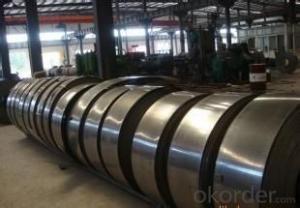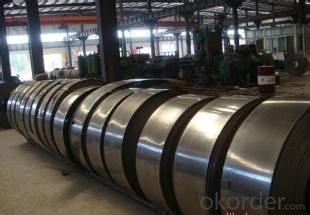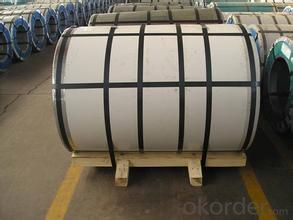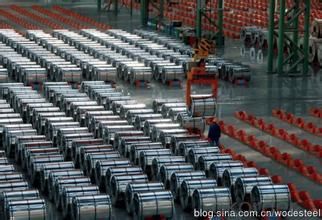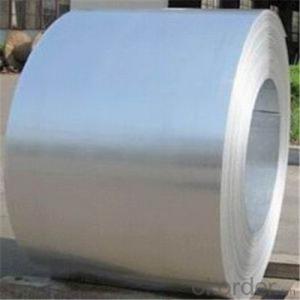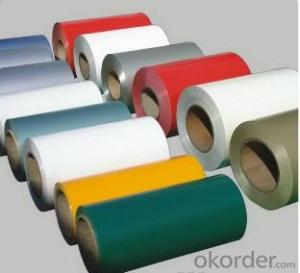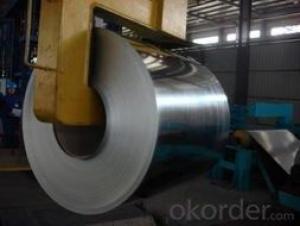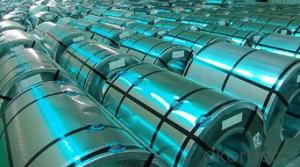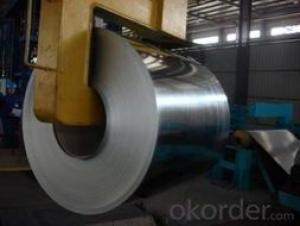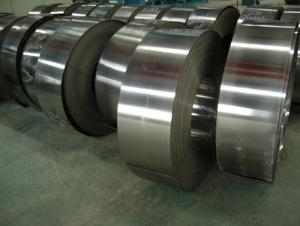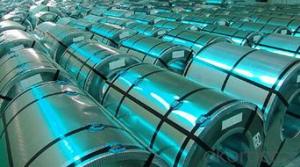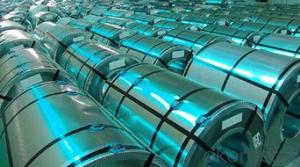Cold Rolled Steel Coil With Best Price JIS G 3302
- Loading Port:
- China main port
- Payment Terms:
- TT OR LC
- Min Order Qty:
- 50 m.t.
- Supply Capability:
- 10000 m.t./month
OKorder Service Pledge
OKorder Financial Service
You Might Also Like
Cold Rolled Steel Coil With Best Price JIS G 3302
1.Structure of Cold Rolled Steel Description:
The raw material of cold rolled steel coil/sheet is high quality hot rolled product, and after pickling continuous rolling, degreasing, annealing,skin pass,slitting and cut to length line etc. Along with it many kinds of new technology and new process of global cold rolling production have been applied. Therefore the quality of the goods could be guaranteed. The product is widely used in outdoor and interior decoration, furnishing manufacturing, home appliance, automobile etc.
2.Main Features of the Cold Rolled Steel:
• Excellent process capability
• Smooth and flat surface
• Workability, durability
• Excellent heat resistance performance
• High strength
• Good formability
• Good visual effect
3.Cold Rolled Steel Images
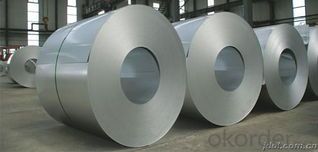
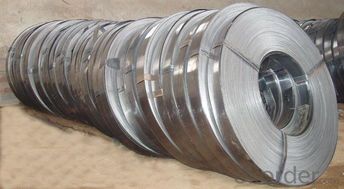
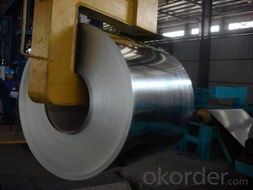
4.Cold Rolled Steel Specification
Standard:AISI,ASTM,DIN,GB,JIS,JIS G3302 ASTM 653M EN10142
Grade: Q195~Q345
Thickness: 0.16mm~2.0mm
Width: 1250mm MAX
Coil weight:3-12 MT
Coil ID:508/610mm
Chemical composition:
C | Si | Mn | Cr | Ni | P | S |
0.150 | 0.476 | 11.231 | 12.50 | 0.900 | 0.039 | 0.010
|
5.FAQ of Cold Rolled Steel
1.How to guarantee the quality of the products?
We have established the international advanced quality management system,every link from raw material to final product we have strict quality test;We resolutely put an end to unqualified products flowing into the market. At the same time, we will provide necessary follow-up service assurance.
2. How long can we receive the product after purchase?
Usually within thirty working days after receiving buyer’s advance payment or LC. We will arrange the factory manufacturing as soon as possible. The cargo readiness usually takes 15-25 days, but the shipment will depend on the vessel situation.
- Q: Does steel contain nickel?
- *Most of the grades of stainless steel contains nickle except few grades of ferritic/Martensitic stainless steel. For example , SAE416 / SAE 420 does not contain Nickle. See Stainless steel designations table at following link:
- Q: What are the different coil coating options available for steel coils?
- There are several coil coating options available for steel coils, including polyester, polyurethane, fluoropolymer, silicone polyester, and plastisol coatings. Each of these options offers different properties such as durability, weather resistance, UV protection, and chemical resistance, allowing for customization based on the specific application and environmental conditions.
- Q: What are the different methods of uncoiling steel coils?
- There are several different methods of uncoiling steel coils, depending on the specific requirements and equipment available. Some common methods include: 1. Uncoiling by hand: This method involves manually unwinding the coil by hand using a bar or rod inserted through the inner diameter of the coil. It is typically used for smaller coils or when other methods are not available. 2. Uncoiling with a mandrel: A mandrel is a cylindrical tool that supports the inner diameter of the coil and allows it to rotate freely. The coil is placed on the mandrel, which is then rotated to unwind the steel. 3. Uncoiling with a decoiler machine: Decoiler machines are designed specifically for uncoiling steel coils. They typically consist of a mandrel or drum that holds the coil, along with a motorized mechanism that rotates the coil and controls the speed of unwinding. Decoilers can handle larger and heavier coils, making them suitable for industrial applications. 4. Uncoiling with a straightener-feeder: This method is often used when the steel coil needs to be straightened and fed into a production line simultaneously. The coil is passed through a set of straightening rollers to remove any curvature, and then fed into the subsequent processing equipment. 5. Uncoiling with a recoiler: Recoilers are used when the steel coil needs to be rewound into a new coil. The original coil is uncoiled using one of the aforementioned methods, and then the steel is rewound onto a new mandrel or drum to create a smaller coil. It is important to note that the choice of uncoiling method depends on various factors such as the size and weight of the coil, the desired level of automation, and the specific production requirements.
- Q: What are the dimensions of steel coils used in the railway equipment industry?
- The dimensions of steel coils used in the railway equipment industry can vary depending on the specific application and requirements. However, some common dimensions for steel coils used in this industry are typically around 3 to 5 feet in width and 10 to 15 feet in length. The thickness of the steel coils can vary as well, ranging from 0.01 to 0.5 inches. It is important to note that these dimensions are not fixed and may vary based on the specific needs of the railway equipment industry, such as the type of equipment being manufactured or the specific function of the steel coils.
- Q: How are steel coils processed for cold rolling or hot rolling?
- Steel coils are first unwound and inspected for any defects. Then, they are cleaned and treated to remove any impurities. For cold rolling, the coils are passed through a series of rollers at room temperature to reduce their thickness and improve their surface finish. On the other hand, for hot rolling, the coils are heated to high temperatures and then passed through rollers to achieve the desired thickness and shape.
- Q: How are steel coils inspected for width?
- To ensure compliance with the necessary specifications, various techniques are employed to inspect the width of steel coils. Among these methods, a commonly used one is the utilization of a caliper gauge, also referred to as a micrometer. This gauge makes direct contact with the coil edges to measure its width. The operator places the gauge at multiple points along the width and records the measurements. This approach guarantees precise measurements and facilitates the identification of any inconsistencies or deviations in the desired width. Another technique employed for width inspection is laser measurement. In this method, laser sensors are positioned on both sides of the coil, emitting a laser beam that scans across the width. By detecting the distance between the edges of the coil, the sensors provide accurate width measurements. This non-contact approach is highly efficient, swiftly inspecting the coil's width without causing any physical damage or requiring physical contact. Moreover, advanced systems employ computer vision technology for width inspection. This involves the use of cameras and image processing software to capture images of the coil's edges. The software then analyzes these images and calculates the width based on the detected edges. This method enables rapid inspections and can identify any irregularities in the coil's width. In conclusion, the inspection of steel coil width involves a combination of physical gauges, laser sensors, and computer vision technology. These methods ensure that the coils conform to the required width specifications and play a crucial role in maintaining quality control throughout the steel manufacturing process.
- Q: How are steel coils tested for flatness and straightness?
- Steel coils are tested for flatness and straightness using various methods such as visual inspection, measurement tools like straightedges or laser devices, and specialized equipment like leveling machines. These tests ensure that the steel coils meet the required standards and are free from any deformities or deviations in their flatness and straightness.
- Q: What types of steel are used in steel coils?
- There are various types of steel that are commonly used in steel coils, including carbon steel, stainless steel, and alloy steel.
- Q: How do steel coil manufacturers handle custom orders?
- Custom orders for steel coils are handled by manufacturers through a methodical process. They begin by comprehending the specific requirements of the customer and engaging in detailed communication to gather information. This includes dimensions, tolerances, and other special needs. Manufacturers may offer technical expertise to ensure the feasibility of the custom order. Once the requirements are clarified, manufacturers proceed with designing and engineering the custom steel coils. Advanced software and engineering tools are utilized to create detailed designs and specifications that cater to the customer's unique needs. Prototypes or samples may be created for the customer's approval before full-scale production. After the design phase, manufacturers initiate the production process by sourcing the appropriate raw materials, such as steel coils with the desired composition and thickness. The coils undergo various manufacturing stages, including cutting, shaping, and forming, to achieve the desired dimensions and shapes. Specialized equipment and machinery guarantee precision and accuracy throughout the production process. Quality control plays a crucial role in handling custom orders. Manufacturers conduct thorough inspections and testing procedures at different stages of production to ensure that the custom coils meet the customer's specifications and industry standards. This involves checking for dimensional accuracy, surface finish, mechanical properties, and other specific requirements. Third-party inspection agencies may be involved, and manufacturers may provide customers with test reports and certifications to ensure quality assurance. Lastly, once the custom steel coils are manufactured and pass all quality checks, they are meticulously packaged and delivered to the customer. Manufacturers ensure proper packaging and shipping methods to prevent damage during transit and ensure the coils reach the customer in optimal condition. In summary, steel coil manufacturers handle custom orders by collaborating closely with customers, designing and engineering specialized coils, maintaining quality control throughout the production process, and delivering the custom coils to the customer's satisfaction. This systematic approach enables manufacturers to meet the unique requirements of each customer and provide high-quality custom steel coils.
- Q: What are the challenges in coil edge trimming for narrow strips?
- Coil edge trimming for narrow strips presents several challenges. Firstly, a major hurdle lies in maintaining accuracy and precision throughout the trimming process. It is imperative to achieve an even and smooth trim on narrow strips, requiring a high level of precision. Any deviation from this precision can result in uneven edges or burrs, which ultimately impact the strip's overall quality. Secondly, controlling strip tension poses another challenge. Due to their limited surface area, narrow strips are more susceptible to tension issues. This can lead to problems such as strip breakage or stretching, ultimately affecting the final product's quality. Furthermore, avoiding material waste is a crucial challenge. Narrow strips allow for less margin of error, meaning any mistakes during trimming can result in a significant amount of wasted material. Minimizing material waste is essential for cost-effectiveness and sustainable manufacturing practices. Moreover, maintaining a high production rate can be difficult with narrow strips. The trimming equipment must handle the high speed required for efficient production while still maintaining accuracy and precision. This necessitates the utilization of advanced machinery and technology to ensure smooth and efficient operations. Lastly, the handling and transportation of narrow strips also present challenges. Due to their small size, narrow strips are more prone to damage during handling and transportation. Implementing proper care and handling techniques is vital to prevent any potential damage that could compromise the final product's quality. In conclusion, the challenges in coil edge trimming for narrow strips revolve around precision, tension control, material waste, production rate, and handling. Overcoming these challenges necessitates the use of advanced technology, skilled operators, and meticulous attention to detail throughout the entire process.
Send your message to us
Cold Rolled Steel Coil With Best Price JIS G 3302
- Loading Port:
- China main port
- Payment Terms:
- TT OR LC
- Min Order Qty:
- 50 m.t.
- Supply Capability:
- 10000 m.t./month
OKorder Service Pledge
OKorder Financial Service
Similar products
Hot products
Hot Searches
Related keywords
